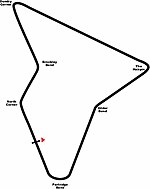Church of St Michael and All Angels, Butcombe
Grade II* listed buildings in North SomersetGrade II* listed churches in Somerset

The Anglican Church of St Michael and All Angels at Butcombe in the English county of Somerset was built in the 15th century and restored in 1868. It is a Grade II* listed building.
Excerpt from the Wikipedia article Church of St Michael and All Angels, Butcombe (License: CC BY-SA 3.0, Authors, Images).Church of St Michael and All Angels, Butcombe
The Batch,
Geographical coordinates (GPS) Address External links Nearby Places Show on map
Geographical coordinates (GPS)
| Latitude | Longitude |
|---|---|
| N 51.3539 ° | E -2.6973 ° |
Address
St Michael and All Angels, Butcombe
The Batch
BS40 7UX
England, United Kingdom
Open on Google Maps









